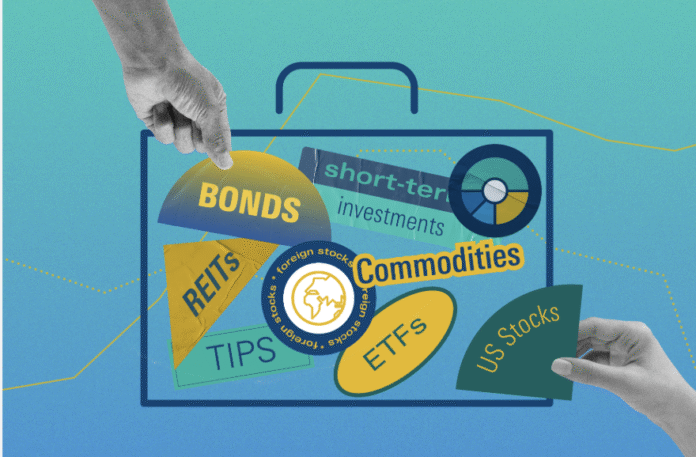Building a balanced portfolio is the cornerstone of successful, long-term investing—no matter where you are in the world. Whether you’re just starting your journey or aiming to fine-tune your finances, understanding the roles of stocks, bonds, and other assets can help you manage risk, weather market ups and downs, and steadily work towards your goals. Here’s how anyone can build a simple, effective, and globally relevant balanced portfolio.
Why Diversification Matters
A “balanced portfolio” means spreading your investments among different asset classes, such as stocks, bonds, and sometimes alternatives like real estate or commodities. The goal? To reduce the risk that comes from putting all your eggs in one basket. If one asset falls in value, others may rise or stay steady, protecting your overall wealth.
The Core Ingredients
1. Stocks:
Also called equities, stocks represent ownership in companies. They offer higher potential returns but come with greater risk and short-term price swings. Different types of stocks, like large-cap, small-cap, and international stocks, offer a variety of opportunities.
Why include them? They fuel long-term growth.
2. Bonds:
Bonds are loans you make to governments or corporations. They pay interest over time and eventually return your principal. Bonds are generally less risky than stocks and provide steady income.
Why include them? They offer stability and income, moderating the risk of an all-stock portfolio.
3. Beyond Stocks and Bonds:
Depending on your goals, you might add real estate (via REITs), cash, gold, or even alternatives like mutual funds, index funds, or ETFs (exchange-traded funds) for more diversification and smoother performance.
Building Your Portfolio: Step-by-Step
Step 1: Know Your Timeframe and Risk Tolerance
Younger investors with decades to invest can afford to take more risk—meaning a higher weight in stocks.
Those nearing retirement often add more bonds for safety.
Assess your comfort with short-term losses: Higher risk can mean bigger gains, but also bigger drops during market downturns.
Step 2: Choose Your Asset Allocation
Asset allocation is the process of deciding what percentage of your money goes into each asset class. Common mixes include:
Portfolio Type Stocks Bonds Other Assets
Aggressive (Growth) 80-90% 10-20% 0-10%
Balanced (Moderate) 60-70% 30-40% 0-10%
Conservative (Safety) 30-50% 50-70% 0-10%
Global investors can also diversify stocks and bonds by region (e.g., U.S., Europe, Asia)—adding protection against country-specific risks.
Step 3: Select Investments
Stocks: Choose a mix of individual stocks or use funds (mutual funds/ETFs) to cover various industries and geographies.
Bonds: Consider government, municipal, or corporate bonds; bond funds or ETFs provide simple exposure.
Beyond: REITs or commodity ETFs if you want extra diversification.
Low-cost global index funds or ETFs are increasingly popular, allowing investors everywhere to create a diversified, hands-off portfolio with minimal fees.
Step 4: Rebalance Regularly
Over time, your allocation will drift as markets rise and fall. Rebalancing trims winning assets and tops up lagging ones—bringing your portfolio back in line with your original plan. This controls risk, enforces discipline, and supports the classic “buy low, sell high” principle.
Keeping It Simple
You don’t need dozens of investments. Many experts suggest you can build a robust, balanced portfolio with as few as three funds—one each for global stocks, global bonds, and a cash/money market fund for emergencies. Automation, like automatic contributions and reinvestment of dividends, helps global investors remain consistent regardless of market mood.
Mistakes to Avoid
Chasing Hot Trends: Jumping into whatever’s surging often leads to regret.
Forgetting Fees: Over time, high management costs can erode returns.
Neglecting Global Exposure: Relying on one country or asset class can backfire.
Ignoring Your Plan: Emotional decisions, especially in panic or greed, disrupt long-term progress.
Balancing for Every Stage of Life
Starting Out: Focus on growth (more stocks), with a safety cushion for emergencies.
Mid-Career: Shift gradually toward more stability as you accumulate wealth.
Nearing Retirement: Protect gains with more bonds and cash; keep some growth to outpace inflation.
Post-Retirement: Emphasize income (bonds, dividend stocks) while balancing growth and safety.
Global Perspective: Why Local and International Matter
Global markets move differently. By holding assets from various countries and sectors, you not only minimize the risk tied to one economy but also tap into growth wherever it happens, from American tech to Asian manufacturing or European healthcare.
Conclusion: Balanced Portfolios Build Long-Term Wealth
A well-balanced portfolio of stocks, bonds, and other assets isn’t flashy, but it’s a proven approach to building and preserving wealth globally. By understanding asset allocation, rebalancing regularly, and resisting the urge to chase trends, anyone—regardless of experience—can invest confidently.
Wherever you are, keep it simple, diversified, and aligned with your goals. Building a balanced portfolio is about steady progress, not quick wins, allowing you to enjoy the growth of your investments while sleeping well at night.
This approach helps you take control of your financial future—no matter the market or your location—offering security, growth, and peace of mind as you journey toward your goals.


